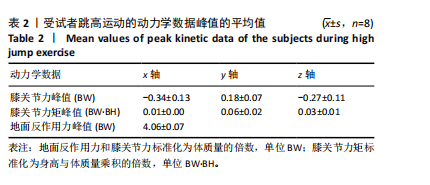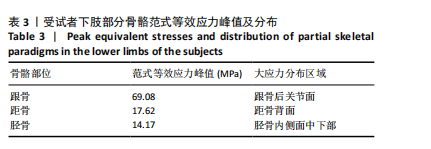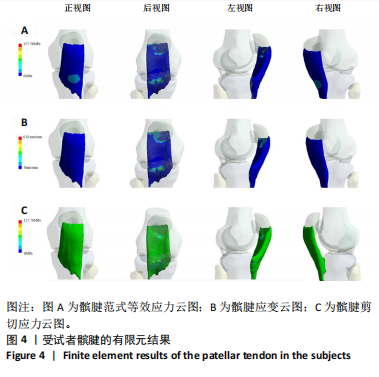[1] MALLIARAS P, BARTON CJ, REEVES ND, et al. Achilles and patellar tendinopathy loading programmes: a systematic review comparing clinical outcomes and identifying potential mechanisms for effectiveness. Sports Med. 2013;43(4):267-286.
[2] JACOBSSON J, TIMPKA T, KOWALSKI J, et al. Injury patterns in Swedish elite athletics: annual incidence, injury types and risk factors. Br J Sports Med. 2013;47(15):941-952.
[3] 任玉衡,田得祥,史和福,等. 优秀运动员的运动创伤流行病学调查[J]. 中国运动医学杂志,2000,19(4):377-386.
[4] JANSSEN I, VAN DER WORP H, HENSING S,et al. Investigating Achilles and patellar tendinopathy prevalence in elite athletics.Res Sports Med. 2018;26(1):1-12.
[5] 洪靖,黄晨宾,黄宇豪,等. 跳高运动员体能结构化模型构建研 究//第十三届全国体育科学大会论文摘要集:墙报交流(运动训练学分会)(一)[C].天津:2023: 454-456.
[6] KETTUNEN JA, KVIST M, ALANEN E, et al. Long-term prognosis for jumper’s knee in male athletes. A prospective follow-up study. Am J Sports Med. 2002;30(5):689-692.
[7] Miller TT.The patellar tendon.Semin Musculoskelet Radiol. 2013; 17(1):56-59.
[8] 周玉,龙小安,李宁,等. 有限元法分析髌腱炎状态时的生物力学变化[J]. 中国组织工程研究,2020,24(8):1280-1286.
[9] GOLMAN M, WRIGHT ML, WONG TT, et al. Rethinking Patellar Tendinopathy and Partial Patellar Tendon Tears: A Novel Classification System. Am J Sports Med. 2020;48(2):359-369.
[10] WEIDLICH K, MERSMANN F, DOMROES T, et al. Quantification of patellar tendon strain and opportunities for personalized tendon loading during back squats. Sci Rep. 2023;13(1):8661.
[11] HAGEN M, VAN ROSSOM S, CATELLI DS, et al. External weight mass and carrying position influence peak patellar tendon force and patellofemoral joint contact force independently during forward lunge.Clin Biomech (Bristol). 2023;110:106127.
[12] MENDONÇA LD, OCARINO JM, BITTENCOURT NFN, et al. Association of Hip and Foot Factors With Patellar Tendinopathy (Jumper’s Knee) in Athletes. J Orthop Sports Phys Ther. 2018;48(9):676-684.
[13] ZDERIC I, VARGA P, STYGER U, et al. Mechanical Evaluation of Two Hybrid Locking Plate Designs for Canine Pancarpal Arthrodesis.Biomed Res Int. 2021;2021:2526879.
[14] 王丽珍. 损伤与康复生物力学[J]. 医用生物力学,2021,36(S1):9.
[15] LU C, FAN Y, YU G, et al. Asymptomatic foot and ankle structural injuries: a 3D imaging and finite element analysis of elite fencers. BMC Sports Sci Med Rehabil. 2022;14(1):50.
[16] YAN C, BICE RJ, FRAME JW, et al. Multidirectional basketball activities load different regions of the tibia: A subject-specific muscle-driven finite element study. Bone. 2022;159:116392.
[17] KHASSETARASH A, HAIDER I, BAGGALEY M, et al. Tibial Strains During Prolonged Downhill Running: A Finite Element Analysis. J Biomech Eng. 2023;145(4):041007.
[18] 张雷蕾,王盟圣,徐大伟,等. 足部三维有限元建模及其多姿态生物力学分析[J]. 中国组织工程研究,2021,25(30):4799-4804.
[19] 宫赫,张萌,邹姗姗. 肌骨系统生物力学建模2021年研究进展[J].医用生物力学,2022,37(1):18-26.
[20] YU G, FAN Y, FAN Y, et al. The Role of Footwear in the Pathogenesis of Hallux Valgus: A Proof-of-Concept Finite Element Analysis in Recent Humans and Homo naledi. Front Bioeng Biotechnol. 2020;8:648.
[21] ZIMMERMANN M, ENDER A, EGLI G, et al. Fracture load of CAD/CAM-fabricated and 3D-printed composite crowns as a function of material thickness. Clin Oral Investig. 2019;23(6):2777-2784.
[22] 洪靖,卢从飞,黄晨宾,等. 材料生物力学研究热点与态势的可视化分析[J]. 中国组织工程研究,2024,28(15):2358-2363.
[23] LI J, WEI Y, WEI M. Finite Element Analysis of the Effect of Talar Osteochondral Defects of Different Depths on Ankle Joint Stability. Med Sci Monit. 2020;26:e921823.
[24] CAGLE JC, REINHALL PG, ALLYN KJ,et al. A finite element model to assess transtibial prosthetic sockets with elastomeric liners. Med Biol Eng Comput. 2018;56(7):1227-1240.
[25] 潘正晔,马勇,王虹,等. 四种方向单腿跳膝关节应力分布特征的有限元分析[J]. 中国康复医学杂志,2020,35(9):1038-1043.
[26] 吴成亮. 高水平体操运动员落地冲击时踝关节的生物力学研究[D]. 上海:上海体育学院,2019.
[27] DU M, SUN J, LIU Y, et al. Tibio‐Femoral Contact Force Distribution of Knee Before and After Total Knee Arthroplasty: Combined Finite Element and Gait Analysis. Orthop Surg. 2022;14(8):1836-1845.
[28] YU J, ZHAO D, CHEN WM, et al. Finite element stress analysis of the bearing component and bone resected surfaces for total ankle replacement with different implant material combinations. BMC Musculoskelet Disord. 2022;23(1):70.
[29] VS JAN. Color atlas of skeletal landmark definitions.Guidelines for reproducible manual and virtual palpations. Amsterdam: Elsevier Health Sciences.2007.
[30] 王丹阳. 北京市三名优秀男子跳高运动员起跳技术的足底压力分布与动力学研究[D]. 北京:首都体育学院,2018.
[31] 黄萍,钟慧敏,陈博,等. 正常青年人三维步态:时空及运动学和运动力学参数分析[J]. 中国组织工程研究,2015,19(24):3882-3888.
[32] 许海飞,赵改平,杨加静,等. 电针治疗膝骨性关节炎患者上下楼梯的三维有限元分析[J]. 中国生物医学工程学报,2021,40(3): 321-329.
[33] 金波,胡云根,韩雷. 半月板三维有限元模型建立及力学分析[J]. 中国骨伤,2020,33(8):766-770.
[34] 李建设,顾耀东,MARK L,等. 踏跳瞬间足后部骨骼的三维有限元分析[J]. 医用生物力学,2008,23(2):127-130.
[35] 陈虬,李宗明. 跳高运动中胫骨应力的有限元分析[J]. 体育科学, 1991,11(1):62-65+96.
[36] HARALDSSON BT, AAGAARD P, KROGSGAARD M, et al. Region-specific mechanical properties of the human patella tendon. J Appl Physiol (1985). 2005;98(3):1006-1012.
[37] COOPER RJ, WILCOX RK, JONES AC. Finite element models of the tibiofemoral joint: A review of validation approaches and modelling challenges. Med Eng Phys. 2019;74:1-12.
[38] TANG J, ZHOU Q, SHEN W, et al. Can we reposition finite element human body model like dummies?. Front Bioeng Biotechnol. 2023;11: 1176818.
[39] UENO R, NAVACCHIA A, SCHILATY ND, et al. Hamstrings Contraction Regulates the Magnitude and Timing of the Peak ACL Loading During the Drop Vertical Jump in Female Athletes. Orthop J Sports Med. 2021;9(9):23259671211034487.
[40] 黎蒙. 女性羽毛球运动员头顶球单腿落地动作的膝关节生物力学有限元分析[D]. 上海:上海体育学院,2020.
[41] NOYES FR, BUTLER DL, GROOD ES, et al. Biomechanical analysis of human ligament grafts used in knee-ligament repairs and reconstructions. J Bone Joint Surg Am. 1984;66(3):344-452.
[42] LAVAGNINO M, ARNOCZKY SP, ELVIN N, et al. Patellar tendon strain is increased at the site of the jumper’s knee lesion during knee flexion and tendon loading: results and cadaveric testing of a computational model. Am J Sports Med. 2008;36(11):2110-2118.
[43] REES JD, MAFFULLI N, COOK J. Management of tendinopathy.Am J Sports Med. 2009;37(9):1855-1867.
[44] WREN TA, LINDSEY DP, BEAUPRÉ GS, et al. Effects of creep and cyclic loading on the mechanical properties and failure of human Achilles tendons. Ann Biomed Eng. 2003;31(6):710-717.
[45] J HAMILL, KM KNUTZEN, TR DERRICK. Biomechanics:40 Years On. Human Kinetics. 2021;(3):228-237.
[46] Kjaer M. Role of extracellular matrix in adaptation of tendon and skeletal muscle to mechanical loading. Physiol Rev. 2004;84(2):649-698.
[47] DAN M, PARR W, BROE D, et al. Biomechanics of the knee extensor mechanism and its relationship to patella tendinopathy: A review. J Orthop Res. 2018;36(12):3105-3112.
[48] HASHEMI J, CHANDRASHEKAR N, SLAUTERBECK J. The mechanical properties of the human patellar tendon are correlated to its mass density and are independent of sex. Clin Biomech (Bristol). 2005; 20(6):645-652.
[49] 华英汇,陈世益,牛文鑫,等. 股内斜肌负载变化影响髌腱近端受力的生物力学研究[J]. 中国运动医学杂志,2008,28(2):184-188.
[50] 张乐,宫赫,刘海波,等. 深蹲的国内外最新生物力学研究进展[J]. 医用生物力学,2017,32(6):566-571.
[51] ALMEKINDERS LC, VELLEMA JH, WEINHOLD PS. Strain patterns in the patellar tendon and the implications for patellar tendinopathy. Knee Surg Sports Traumatol Arthrosc. 2002;10(1):2-5.
[52] 张天伟,代淑兰,李曼丽,等. 多孔发射药冲击受力模拟仿真[J]. 含能材料,2021,29(6):492-500.
[53] DAY EM, ALCANTARA RS, MCGEEHAN MA, et al. Low-pass filter cutoff frequency affects sacral-mounted inertial measurement unit estimations of peak vertical ground reaction force and contact time during treadmill running. J Biomech. 2021;119:110323.
[54] WANG JH, GUO Q, LI B. Tendon biomechanics and mechanobiology-a minireview of basic concepts and recent advancements. J Hand Ther. 2012;25(2):133-140.
[55] WANG XT, KER RF, ALEXANDER RM. Fatigue rupture of wallaby tail tendons. J Exp Biol. 1995;198(Pt 3):847-852.
[56] WIESINGER HP, SEYNNES OR, KÖSTERS A, et al. Mechanical and Material Tendon Properties in Patients With Proximal Patellar Tendinopathy.Front Physiol. 2020;24:11:704.
[57] 姚健. 髌腱炎的MR表现[J]. 国外医学(临床放射学分册),1993(5): 305.
[58] ADOUNI M, MBARKI R, AL KHATIB F, et al. Multiscale modeling of knee ligament biomechanics. Int J Numer Method Biomed Eng. 2021; 37(1):e3413.
[59] 徐国栋、袁琼嘉. 运动解剖学[M]. 5版.北京: 人民体育出版社, 2012.
[60] NICHOLSON G, JONGERIUS N, TUCKER CB, et al. The Association Between Hip-Shoulder Separation Angles and Technique Characteristics in World-Class High Jumpers. Front Sports Act Living. 2022;4:873526.
[61] 杨鸿. 男子排球运动员髌骨张腱末端病的防治体会[J]. 中国运动医学杂志,2001,20(4):441-442.
[62] ZHANG M, ROBERTS C. Comparison of computational analysis with clinical measurement of stresses on below-knee residual limb in a prosthetic socket. Med Eng Phys. 2000;22(9):607-612.
[63] 彭瑛. 工程力学[M]. 杭州: 浙江大学出版社,2012:225-226.
[64] ALENTORN-GELI E, MYER GD, SILVERS HJ, et al. Prevention of non-contact anterior cruciate ligament injuries in soccer players. Part 1: Mechanisms of injury and underlying risk factors. Knee Surg Sports Traumatol Arthrosc. 2009;17(7):705-729.
[65] WANG K, HOSSEINNEJAD SH, JABRAN A, et al. A biomechanical analysis of 3D stress and strain patterns in patellar tendon during knee flexion.Int J Numer Method Biomed Eng. 2020;36(9):e3379.
|




